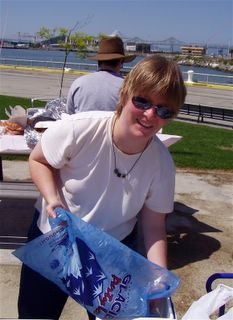
Last night for my father’s birthday, we went to a fantastic restaurant in the Berkshires, Wheatleigh. It’s the same place we went for my mother’s 60th, as well. We’ll forgive the lack of creativity because it’s so good. This time we had a tasting menu, where, over the course of several hours, the kitchen attempted to kill us with, I think, six different courses. It started modestly, with a small mushroom grilled in butter, and ended with a half a peach served with sweetened ricotta cheese. In between there was grilled black bass, gnocchi, monster shrimp, and aged beef served with the most decadent mashed potatoes I’ve ever had—I hate to think how much cream, butter, and cheese went into them but the dish was barely recognizable as potato. It tasted and felt more like melted brie.
Don’t even start me on the wine. All I can say about that is that we hired a driver, because my father, at least, had the foresight to understand what happens when you have even just a little snort of a different wine with six or seven courses.
The last time I went, I remember thinking that the serving sizes were pleasantly modest—I left full, but not bursting. This time, even though all the plates seemed quite small, they mounted up to the point that everyone at the table passed up the optional cheese course. And this morning, another unprecedented thing happened: To the best of my knowledge, all the Clausings skipped breakfast. And we love breakfast. I personally eat as many breakfasts as I can every day, because it’s never too late or too early for waffles. But not today. I had some coffee, a lot of water, and a tiny bit of bread just to cushion the coffee blow. There was no possibility of a real meal until lunchtime, and even then, I didn’t want much.
In a few more hours, we’ll have to prepare ourselves to have dinner again. Don’t worry; we’re Clausings. We’ll be ready.
(For the curious, the people in the front row of the photo are my sister, my father, and a family friend named David. Back row: my Mom, and family friend Duane.)



